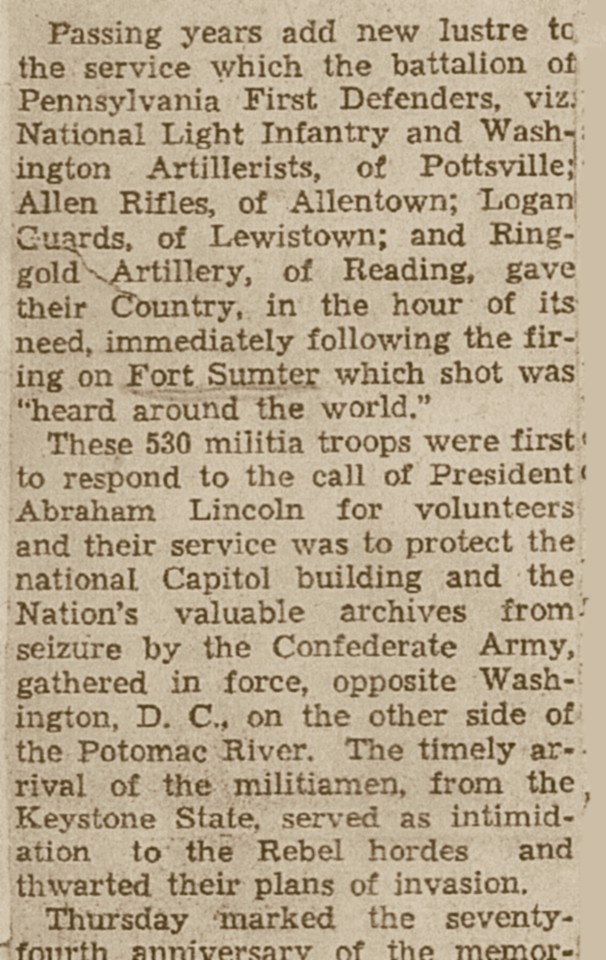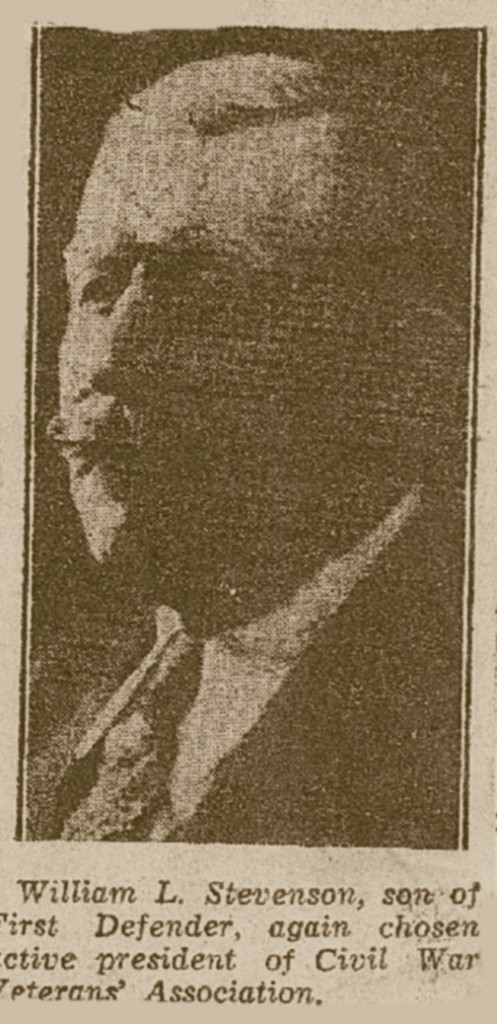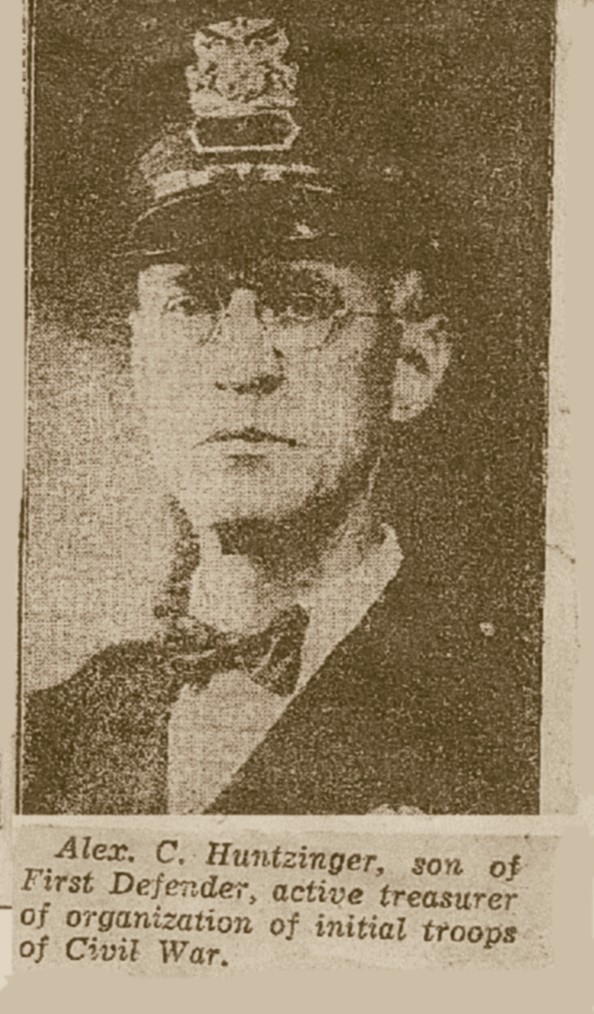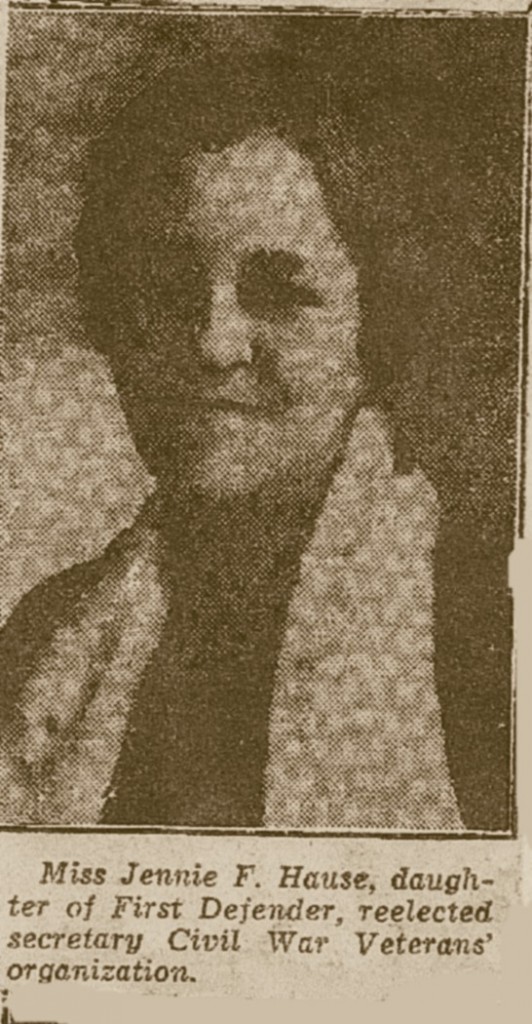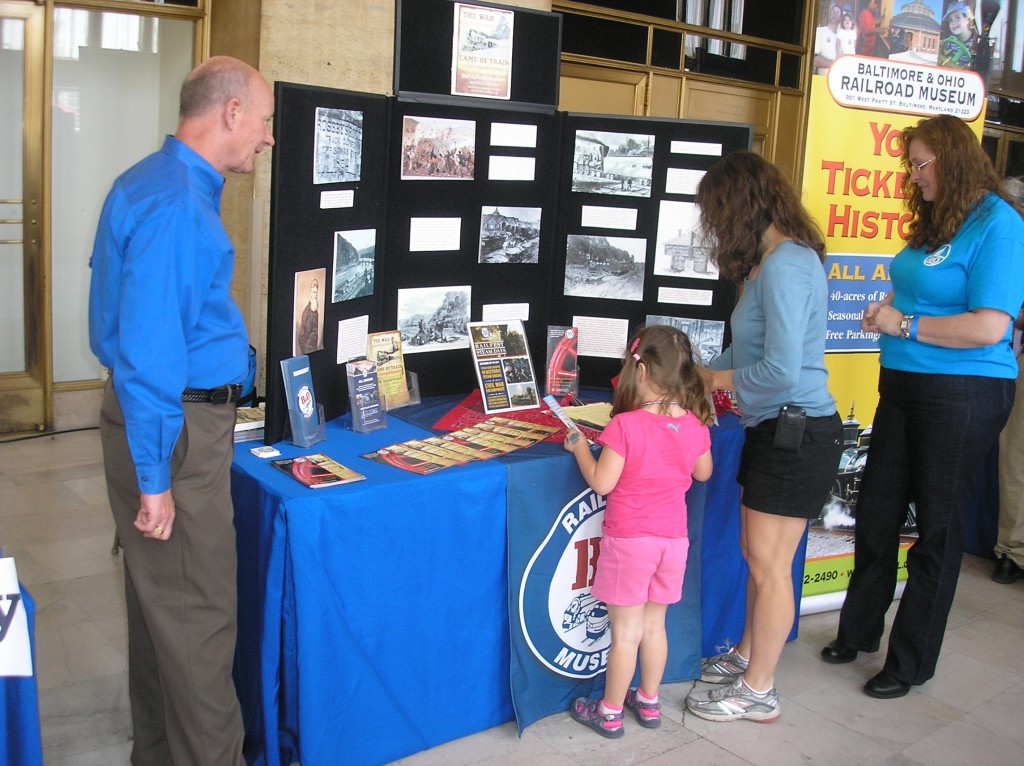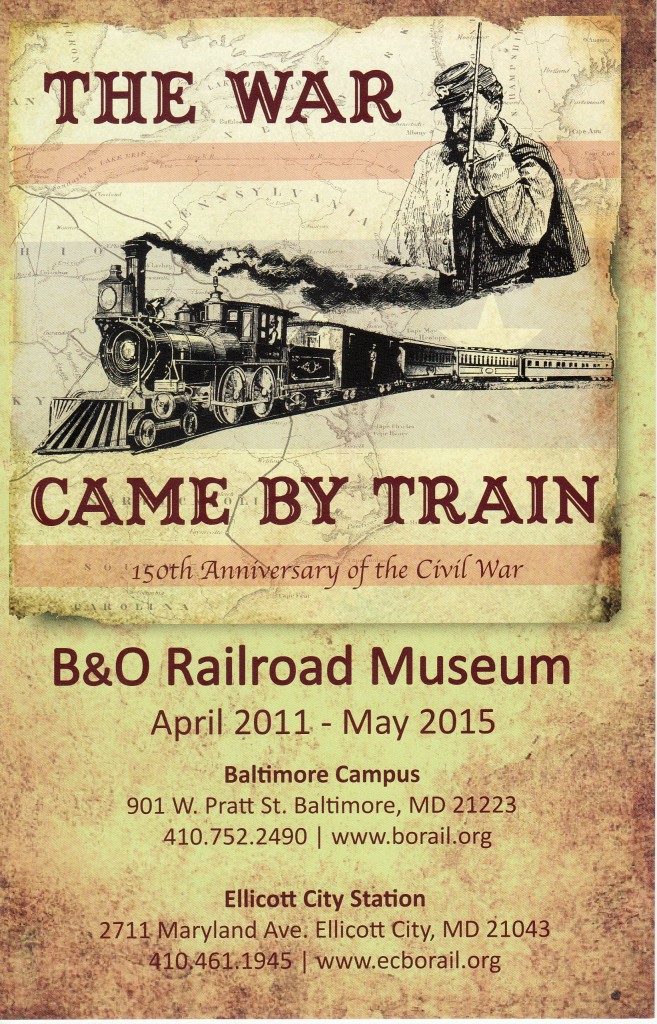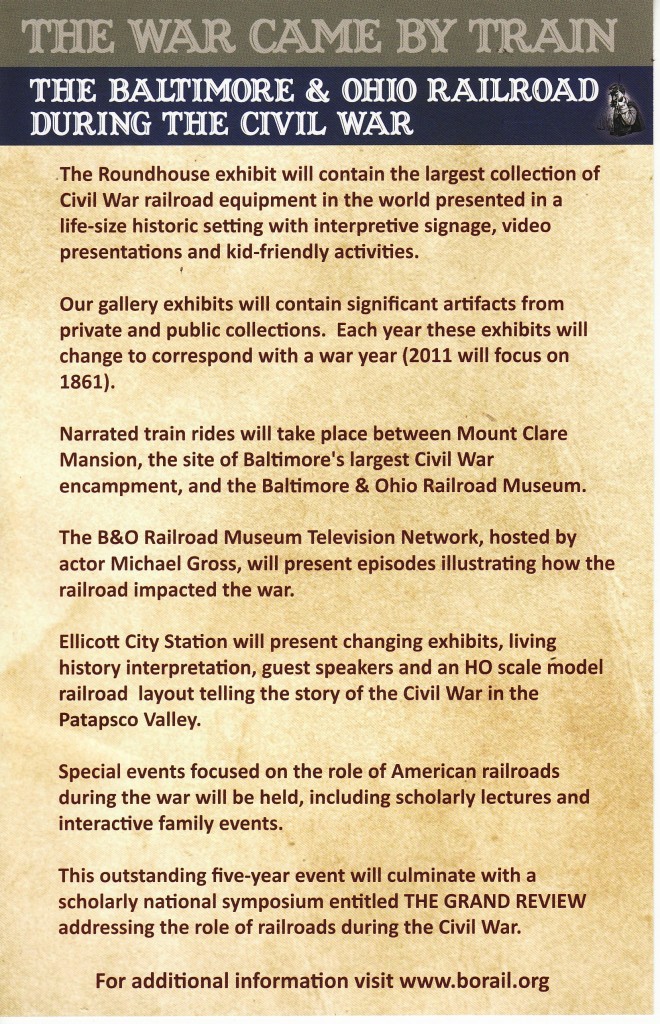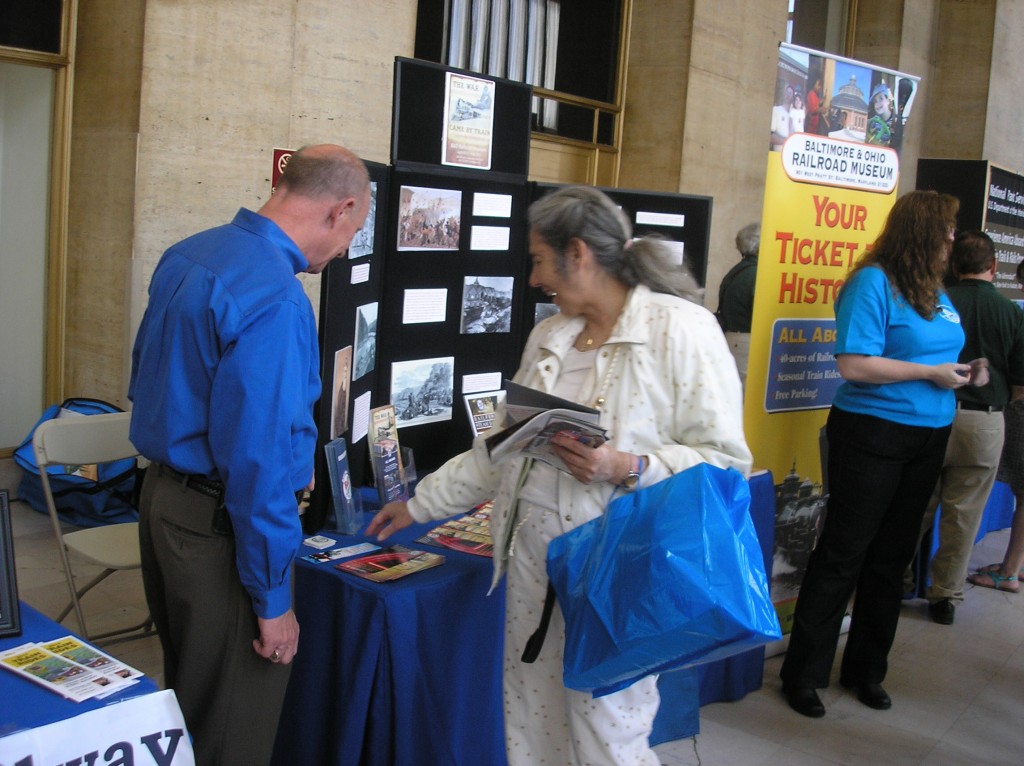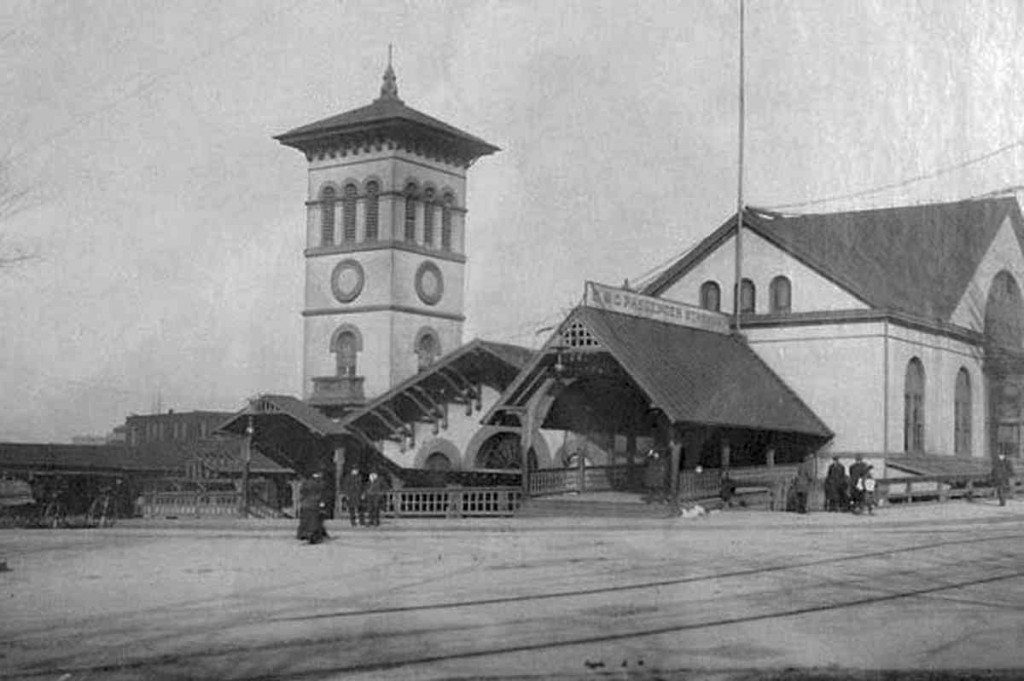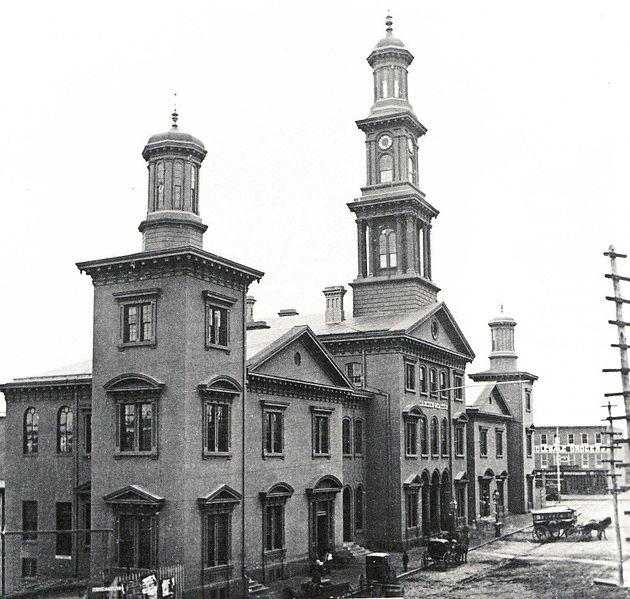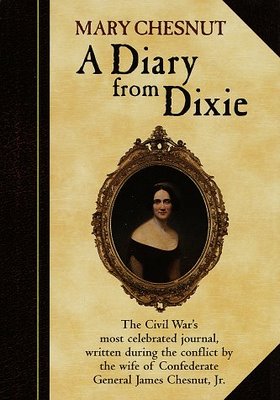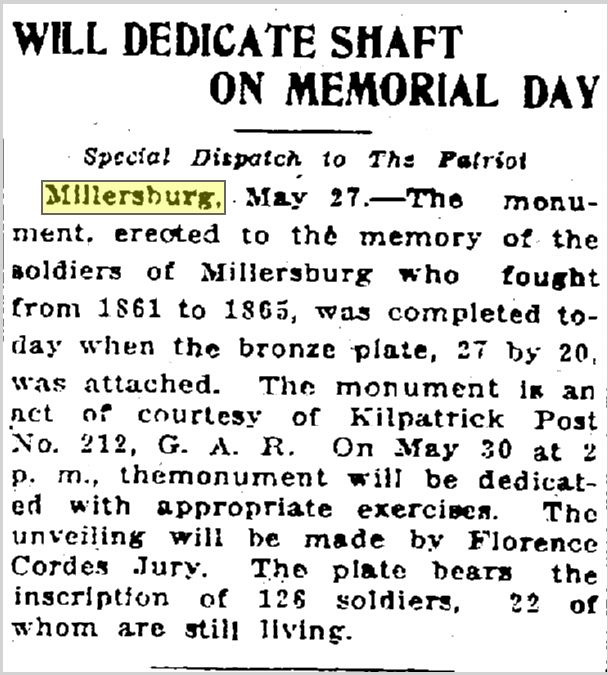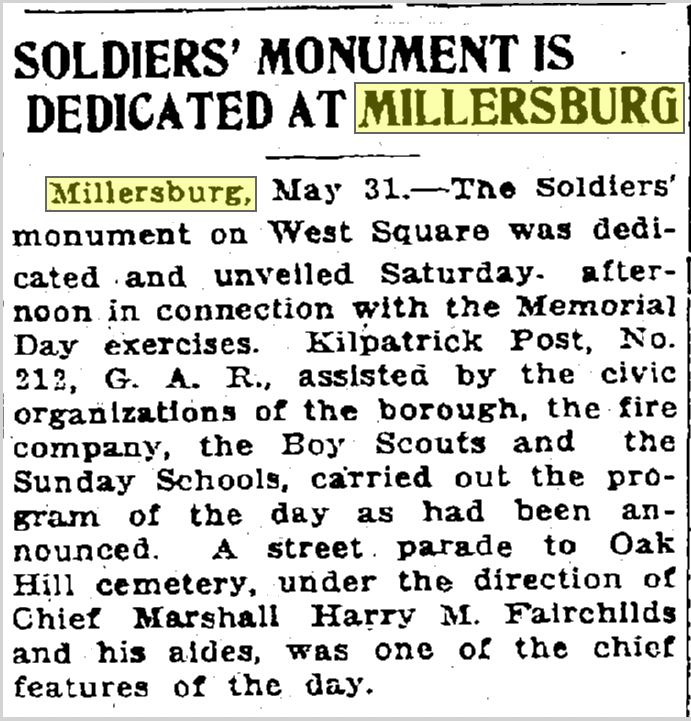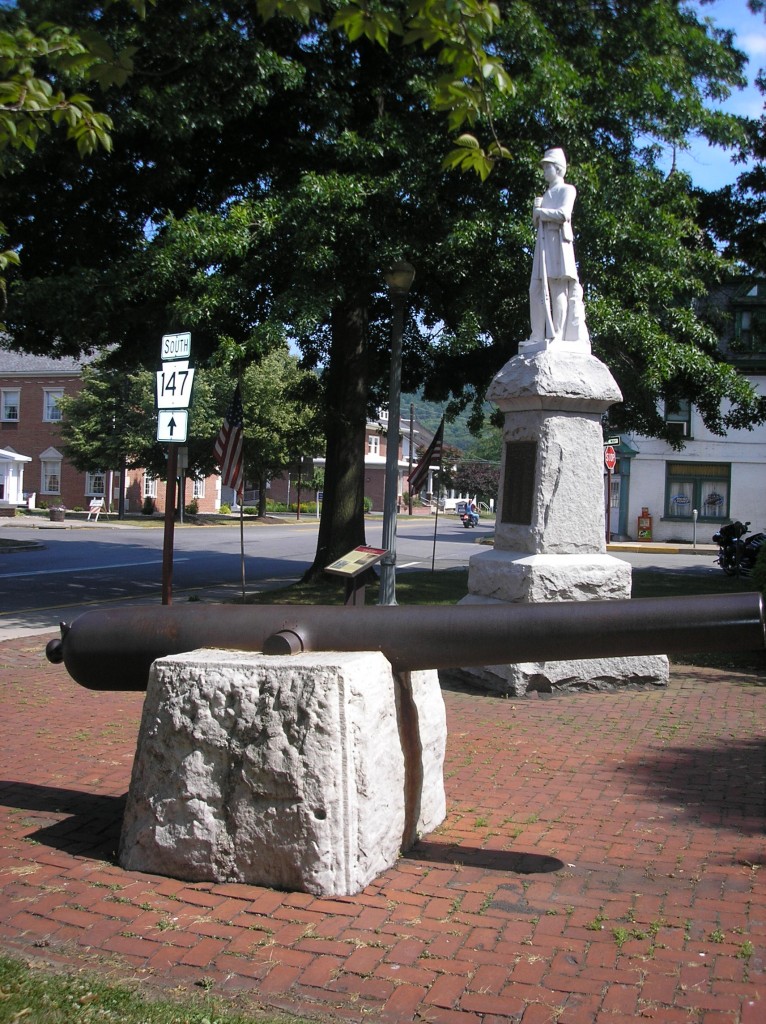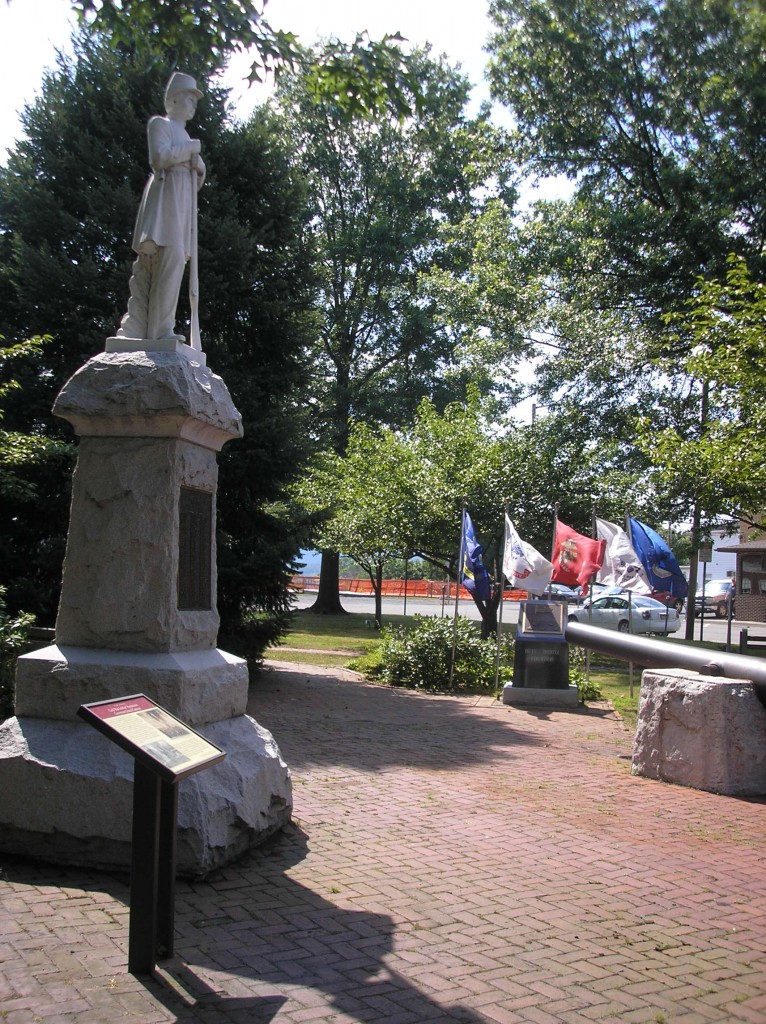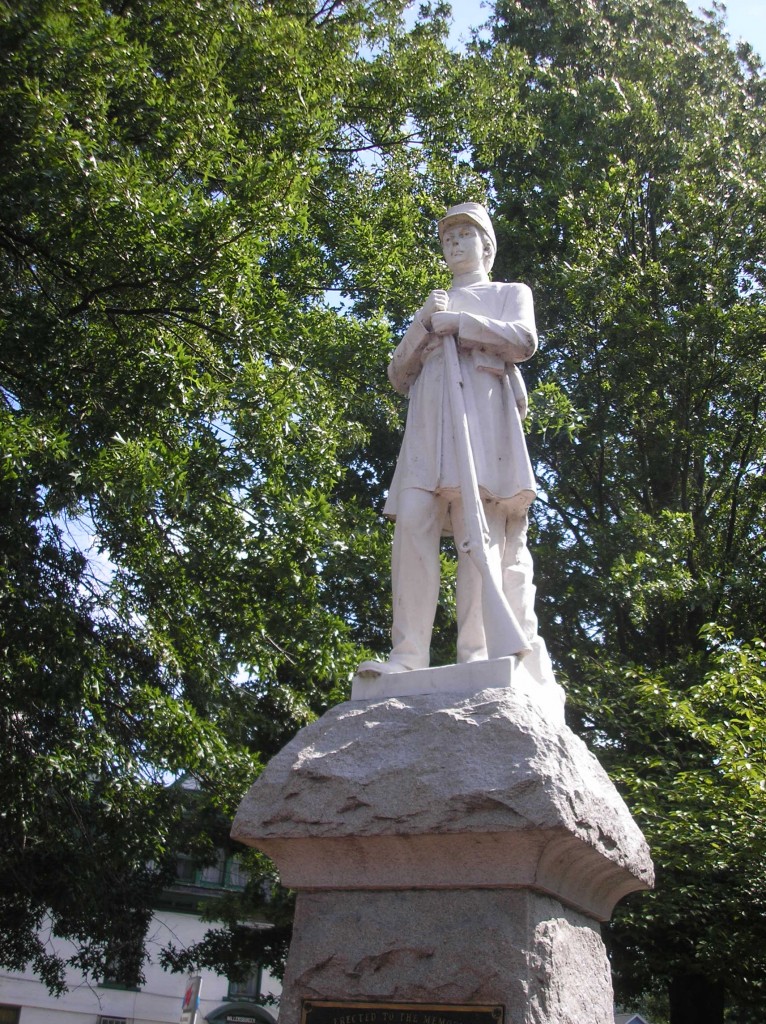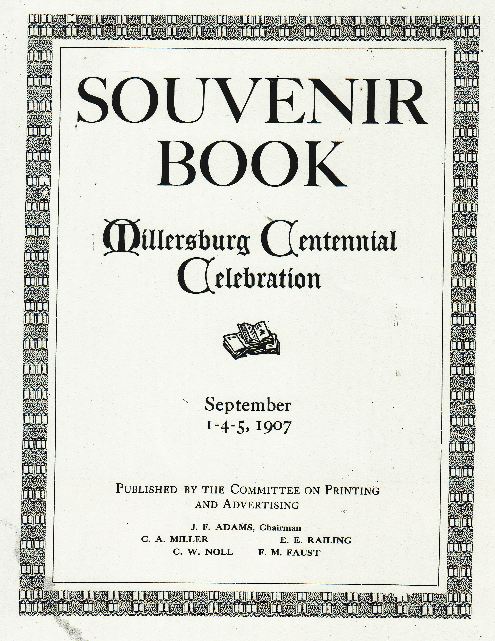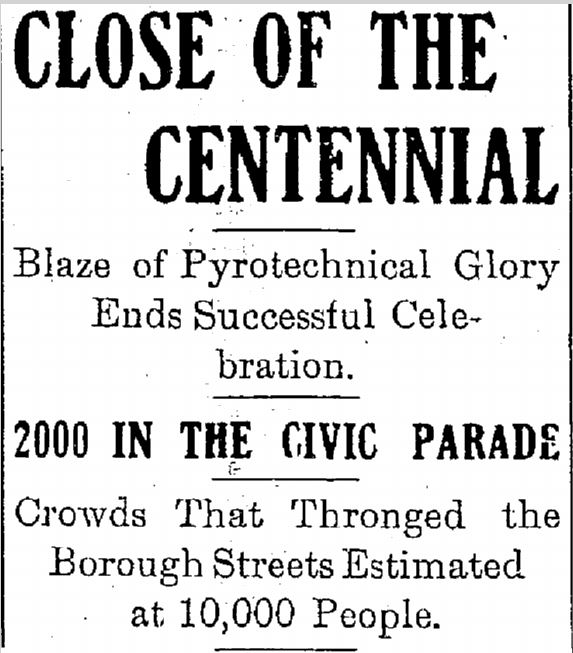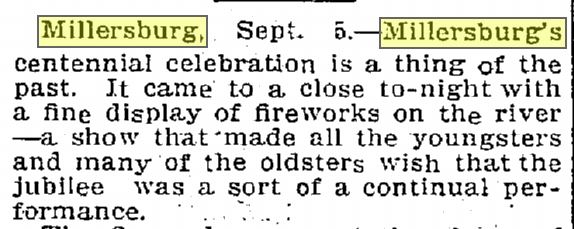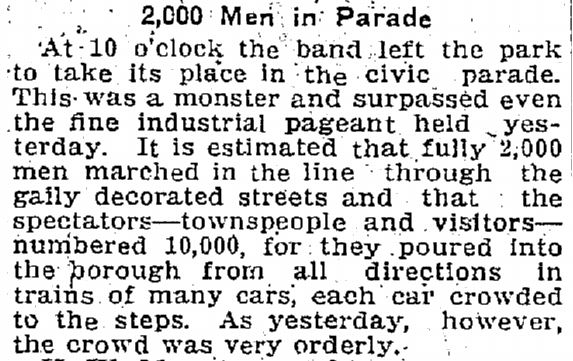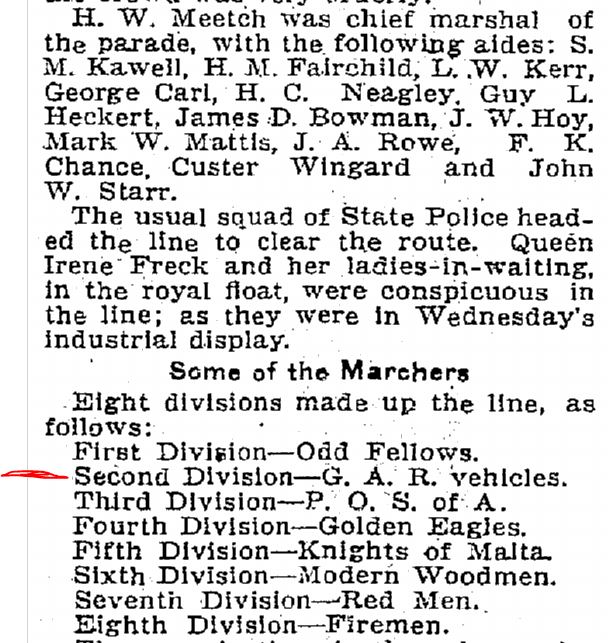The 1935 Reunion of the First Defenders
Posted By Norman Gasbarro on May 23, 2012
The following article appeared in a local newspaper in 1935. It described what was to be the last reunion of the First Defenders from Pennsylvania who answered the call in the first days after the attack on Fort Sumter. Lt. William Irving, of Lykens, Dauphin County, who was one of only three survivors of that group of about 530 men who were members of local militia groups at the time the war began, was the only one who was able to attend the reunion. Unfortunately, Lt. Irving died later in the year, and if the association and annual event was carried forward into 1936, it would be attended only by descendants of the veterans who wished to perpetuate their memory.
The reunion in 1935 was held at the Necho Allen Hotel in Pottsville, Schuylkill County, Pennsylvania.
One First Defender Attends 74th Reunion; Two Other Survivors
Passing years add new lustre to the service which the battalion of Pennsylvania First Defenders, viz National Light Infantry and Washington Artillerists, of Pottsville; Allen Rifles of Allentown; Logan Guards of Lewistown; and Ringgold Artillery of Reading, gave their Country, in the hour of its need, immediately following the firing on Fort Sumter which shot was “heard around the world.”
These 530 militia troops were first to respond to the call of President Abraham Lincoln for volunteers and their service was to protect the national Capitol building and the Nation’s valuable archives from seizure by the Confederate Army, gathered in force, opposite Washington, D.C., on the other side of the Potomac River. The timely arrival of the militiamen, from the Keystone State, served as intimidation to the Rebel hordes and thwarted their plans of invasion.
Thursday marked the seventy-fourth anniversary of the memorable march of the Pennsylvania First Defenders’ battalion through the Secessionist mobs upon the streets of Baltimore on to the defense of the Capital where they gave three months’ of service. Of the original muster there are but three survivors, viz, Jonathan Shearer, 96 of Omaha, Nebraska; Gen. Francis A. Stitzer, 95, of Denver, Colorado; and Lt. William Irving, 95, of Lykens, Pennsylvania. The ages of the three survivors make the remarkable total of 286 years, a combination not to be attained by possibly any other group extant.
The response of the First Defenders was on 17 April 1861. Their patriotism did not cease with that service, for after that enlistment expired, they were identified with the 48th and 96th Regiments [48th Pennsylvania Infantry, 96th Pennsylvania Infantry], in the commands of which were many Schuylkill County as well as other regiments gallantly fighting until the close of the war which brought everlasting victory to the Union forces and forever swept away possibilities for disruption of the United States.
Veterans Made Honorary Officers
As last year, the reunion and banquet were conducted at the Necho Allen Hotel. At 11:45 a.m., there was a brief business session. Lt. Irving, honorary president, was the only First Defenders’ survivor in attendance. Greetings were read from Comrades Shearer and Stitzer, who, on account of their extreme years and the great distance they would have had to travel, were unable to attend the reunion. The latter’s letter declared that, on 29 August 1935, he will have actually attained to ninety-five years on his long life’s journey. He stated that he would be unable to be present because his wife, several years younger than himself, had been ill for the past two weeks, and needed his looking after her. The veteran went on to say that he, daily, walks about ten or twelve blocks, for his health, adding “that’s pretty good for a young fellow of five-and-ninety years.”
It was decided that the next reunion would be held at Pottsville. Lt. Irving said he fully expects to be present to celebrate the 75th anniversary of the organization. A pathetic incident associated with the rollcall was no response from either of the commands that went out from Reading, Allentown, and Lewistown, the last soldier having answered the final rollcall and joined the bivouac of the great Army of dead heroes.
In memory of the rank and file of the deceased members of the Association, soldier veterans as well as their descendants, in particular Secretaries Francis B. Bannon, Capt. Edwin D. Smith and Elmer E. Nagle, all rose and stood with bowed heads in a moment of prayer. When the name of Lt. Irving was reached , in the rollcall, all stood at salute, the veteran rising and bowing his acknowledgment. At the business meeting were more than two-score children and relatives of First Defenders.
The annual election resulted in the selection of the following honorary officers: Lt. William Irving, President; Gen. Francis A. Stitzer, First Vice President; and Jonathan Shearer, of Omaha, Nebraska, Second Vice President. The active officers, who ably conducted the business sessions, were chosen to succeed themselves, as follows: President, William L. Stevenson, son of Hugh Stevenson, a First Defender of the Washington Artillerists; Secretary, Miss Jennie F. Hause, daughter of Francis Hause, a First Defender, of the Washington Artillerists; and Treasurer, Alex C. Huntzinger, son of William F. Huntzinger, a First Defender, of the Washington Artillerists, who, after the war, was Lieutenant Colonel of the 7th Pennsylvania Militia for years.
About Banquet Board
It was at 12:30 p.m., that the banquet was opened. Just fifty persons participated in it, eighteen more than at the function last year. The tables were arranged in the form of a letter “U.” Lt. Irving was given the honor seat at the head of the table. Assembling of the company began as early as ten o’clock. President Stevenson introduced the chaplain, the Rev. Emil W. Weber, pastor of Trinity Lutheran Church, who made a fervent invocation. The Mrs. Blake Hobbs, granddaughter of the late First Defender Francis House, officiated at the piano, while a verse of the national anthem, America was sung. After pertinent remarks, the presiding officer turned over the banquet to Toastmaster Edgar Downey, Esq.
It was arranged that, in lieu of after-dinner talks, all the addresses would be informal, and would be given before the menu was negotiated. They were reminiscent recalling forbears who served as First Defenders.
Lt. Irving was given an ovation when he was called upon. He occupied a few moments in expressing appreciation of the honor done him regretting that his two surviving comrades could not have also been present at the reunion.
Tribute was paid the honor survivor by Col. James Archbald who, for many years, has attended these annual reunions. Miss Hause, also, contribute timely remarks eulogizing the surviving First Defenders and the duty devolving upon the children and descendants of the Pennsylvania Battalion to perpetuate the memory of these dead heroes.
She reminded the time is not far distant when the last First Defender will have answered his final roll-call.
Reference was made by Secretary House to the fact, that the third generation representation, of descendants of First Defenders, was seated about the festive board in the following: Francis Hause III, grandson of Comrade Francis Hause; Robert Potts, grandson of Comrade Charles P. Potts, and Heber Thompson, grandson of Maj. Heber M. Thompson.
Judge Palmer Guest Orator
Hon. Cyrus M. Palmer, representing the Schuylkill County Bench, a grandson of Capt. Cyrus Sheetz, First Defender, of the National Light Infantry, was the guest orator. His eloquent address reviewed events of the Civil War and showed advantages accruing from the prompt response of the Pennsylvania First Defenders and the psychological affect of their timely presence at the national capital.
Through the progress of the banquet there was a running conversation and exchange of pleasantries, anecdotes and reminiscences of Civil War days.
The menu which was served at the banquet, follows: Fruit cups, chicken consomme with noodles, bread, butter, pickles, creamed chicken-en-casserole lined with mashed potatoes, hot rolls, new green peas, fresh fruit salad, in separate courses, ice cream, fresh crushed strawberries, little cakes, after-dinner mints and coffee.
At the close of the banquet the Benediction was pronounced by Chaplain Weber.
Patriotic decorations adorned the banquet room, personally arranged by Secretary Hause. Red, white and blue, the national colors, marked the napery trimmings. Miniature , taken from pretty little nut cups at each plate, were pinned upon each guest. A conspicuous part of the decorations was a crystal candlestick, in the center of the banquet board with other holders, on either side, in which were placed candles of the patriotic colors. Artistically draped upon the piano was a large emblem of “Old Glory,” eight feet long, made by Miss Hause at the request of her First Defender father some years ago. It attracted general attention.
Other decoration were four flags upon staffs thrust into ornamental bases. A beautiful sunburst was also placed on the piano. It was of red, white and blue flags in miniature. About the rim of the festive board were intertwined decorative ropes of the national colors. Still another conspicuous feature of the decoration was a handsome bouquet in a cut-glass basket, consisting of red and white carnations, and blue iris with hardy flowers.
The seating arrangement about the festive board was: Lt. Irving, at the head of the table; William L. Stevenson and Edgar Downey, in the centre; Judge Cyrus M. Palmer, Col. James Archbald; the Mayor; Chaplain E. W. Weber; Miss Jennie F. Hause, Secretary; Mrs. Cyrus M. Palmer; Mrs. James Archbald; Mrs. Edgar Downey; and C. A. Pfeiffer, of Lykens, personal attendant of First Defender Survivor; Mrs. H. R. Broad and Mrs. Samuel B. VanBuren, sisters, and their brother, Benjamin H. Keiper, of Brooklyn, children of the late George A. Keiper, a First Defender, who was a member of the Allen Rifles of Allentown.
Other children and grandchildren at the banquet board were: Edward Russell, of Tresckow, Pennsylvania; Mrs. James M. Butler; Mrs. William B. Shugars Sr.; Miss Kathryn Shugars; William B. Shugars Jr.; Jesse Stevenson; Paul A. Stevenson; Helen Irving Borden; — [sic, see below paragraph] grandson of the late Sgt. Daniel Downey, who was a First Defender of the National Light Infantry. He gave a terse and interesting history of the First Defenders, using first-hand information taken from his grandfather’s diary.
[sic] a grand niece of Lt. Irving [printer’s error in linotype arranging… probably refers to Helen Irving Borden in preceding paragraph] ; Mr. and Mrs. Alex C. Huntzinger; Aaron Potts; Mrs. William F. Nagle; Miss Minnie Hesser; Mrs. Blake Hobbs;Miss Edna Smith and brothers, Burd J. Smith and William Smith, all of Port Carbon [Schuylkill County]; Secretary William Reid, of the 48th Regiment Pennsylvania Volunteers Survivors’ Association [48th Pennsylvania Infantry]; Heber Nagle; Miss Clarissa McCool; Mrs. E. Elmer Shoener; Mrs. H. H. Seltzer; William Sheetz; Charles G. Potts; Misses Clara F. Potts, Annie Britton and Grace Britton; Charles E. Downey; Miss Dorothy Critz; Dean Stevenson; and John J. Kohler, 89, veteran of the 129th Pennsylvania Volunteer Infantry [129th Pennsylvania Infantry].
In the post tomorrow, stories of the First Defenders, as told at the 1935 reunion will be presented. The above article was provided by Sally Reiner of the Lykens–Wiconisco Historical Society from her scrapbook collection. For articles on this blog which featured Lt. William Irving of Lykens, click here. For previous articles on the First Defenders, click here. Finally, does anyone know what happened to the Diary of Daniel Downey which is referred to in the article?
 ;
;

